Energy Efficiency FAQ (Frequently Asked Questions)
Various energy sources are used to turn turbines. The spinning turbine shafts turn electromagnets that are surrounded by heavy coils of copper wire inside generators. This creates a magnetic field, which causes the electrons in the copper wire to move from atom to atom.
Replacing your five most frequently used light fixtures or the bulbs in them with ENERGY STAR certified lights can save $70 a year in energy costs.
(Source: Energy Star)
Hydropower is the most important renewable energy source in Canada. It provides 60% of Canada’s electricity generation. In fact, Canada is the 3rd largest producer of hydroelectricity in the world.
The greenhouse effect is created because certain gases sent into our atmosphere, such as carbon dioxide, allow radiation from the sun to pass through the earth’s atmosphere, but prevent a portion of the infrared radiation from the earth’s surface and lower atmosphere from escaping into outer space. This process occurs naturally; without it our planet’s temperatures would be about 15°C cooler! Life as we know it simply would not exist without the natural greenhouse effect. However, global warming is happening because the greenhouse effect has become intensified primarily by the burning of fossil fuels, which adds more carbon dioxide and other gases to the atmosphere and increases the warming process.
No! If we get serious about energy-saving practices, we can lower our energy costs by several hundred dollars per household per year and reduce greenhouse gas emissions.
Trees take carbon dioxide out of the air and give back oxygen, thus helping reduce the excess of greenhouse gases hovering in the atmosphere and heating up the planet.
Of course it’s possible! There are numerous other ways to reduce gasoline usage short of switching to a hybrid or electric vehicle. Carpooling, biking, and walking are three excellent ways to significantly reduce gas usage, as are telecommuting for work and riding public transportation. Also, combining trips to school or work with routine errands cuts down significantly on miles traveled.
Yes! Manure can be made into a gas containing methane. (Methane is the same energy-rich gas found in natural gas.) Certain types of bacteria emit this gas as they consume the waste collected in special air-free tanks. The mixture of gases produced in this way, called biogas, can then be used in some modified car engines instead of gasoline, or burned in a boiler to generate heat or electricity.
Just like manure, other types of organic waste emit methane as they decompose—or rot—in the landfill. Landfills can collect and treat the methane, and then sell it as a commercial fuel, or they can burn it to generate steam and electricity.
Reduce, reuse, and recycle. Some ways you can reuse items to reduce waste are to bring your lunch in a lunch box instead of a paper bag, use both sides of each sheet of paper, buy products in bulk, bring your old grocery bags to the store when you shop, and give away old toys and clothes. Encouraging your family and school to recycle cans, bottles, papers, and plastics is also an excellent way to conserve energy and natural resources.
There are many ways to measure energy. One of the basic measuring blocks for energy is called a “BTU,” standing for British thermal unit. A BTU is the amount of heat energy it takes to raise the temperature of 0.45 kilograms of water by 0.56 degrees Celsius, at sea level. One BTU equals the heat generated by about one blue-tip kitchen match. One thousand BTUs are roughly equivalent to the energy your body receives from eating an average candy bar.
Make sure the lights and computers are turned off before recess and lunch, and after school; make sure books and furniture do not block the vents in your classroom; keep doors and windows closed when heating or air conditioning is running; turn off the water in the bathroom when you are finished using it; report any water leaks you find to an adult.
LEDs use up to 90% less energy than incandescent light bulbs and last two to five times longer than CFLs.
Compact fluorescent lights (CFLs) and other fluorescent light bulbs contain gases (argon and mercury vapor) that produce invisible ultraviolet (UV) light when stimulated by electricity. When the UV light hits the white phosphor coating inside the fluorescent bulb, the phosphor illuminates or “fluoresces,” changing the UV light into visible light. CFLs are very energy-efficient, using only about one-fifth the energy of a standard incandescent bulb. This is because all of the electricity they use goes toward creating light, whereas the energy used by standard incandescent bulbs creates heat as well as light.
Energy Time Travel
Humans have always depended on energy to survive.
Early people relied on the sun’s heat energy for warmth and to grow plants for food and fuel. They relied on their own muscle power and that of their animals to travel and move objects. Their use of animals, water, wind, and wood had only a slight impact on the environment because the earth’s population was so small and the energy resources they used were renewable.
Today, we rely on other forms of energy and the world has 7 billion people and counting! Can you imagine how much energy 7 billion people use and the impact this has on the environment?
Do some research about the history of humans’ energy use, starting with the discovery of fire in 100,000 BC. Choose three widely spaced time periods between then and now (at least 50 years apart) and for each one, answer two or more of these questions:
- How did people cook their food?
- How did they keep warm?
- How did they travel?
- How did they entertain themselves?
- How did their energy use affect the environment?
Energy Timeline
100,000 BC
Discovery and use of fire.
1000 BC
Wind used to drive ships.
100 BC
Waterwheels developed.
1700s
Wood commonly used for heating and lighting.
1750
Steam engine developed.
1800s
Natural gas manufactured from coal widely used for lighting.
1867
Coal production in Canada reaches 3 megatonnes.
1900
Electricity widely used for lighting.
1920
Model T cars manufactured in large numbers.
1950
1920 to 1950, hydroelectric stations generated 90% of Canada’s electricity.
2017
Over 84% of Canadian households have a home computer.
2020
Almost 67,000 electric cars were sold by Canadian auto dealers.
Energy Resources Today
The energy resources people use today can be divided into two categories: nonrenewable and renewable.
Nonrenewable Resources
Nonrenewable resources cannot be replenished. We have limited supplies of them, and when these supplies are gone we will not have any more.
Fossil fuels were formed from the organic remains of tiny plants and animals that lived long ago. Most electricity used in the world is generated from power plants that burn fossil fuels to heat water and make steam. The highly pressurized steam is directed at turbine blades to make them spin.
The three forms of fossil fuels are coal, oil, and natural gas.
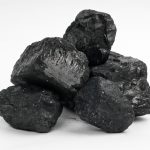 Coal is a hard, black, rock-like substance made up of carbon, hydrogen, oxygen, nitrogen, and sulfur. There are three main types of coal: anthracite, bituminous, and lignite. The precursor to coal, called peat, is still found in many countries and is also used as an energy source. Coal is found in many parts of the United States and throughout the rest of the world.
Coal is a hard, black, rock-like substance made up of carbon, hydrogen, oxygen, nitrogen, and sulfur. There are three main types of coal: anthracite, bituminous, and lignite. The precursor to coal, called peat, is still found in many countries and is also used as an energy source. Coal is found in many parts of the United States and throughout the rest of the world.
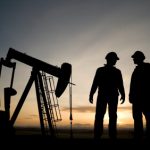 Oil is a liquid fossil fuel, sometimes also called petroleum. It is found underground within porous rocks. To obtain oil, companies drill down to deposits deep below the earth’s surface using oil rigs.
Oil is a liquid fossil fuel, sometimes also called petroleum. It is found underground within porous rocks. To obtain oil, companies drill down to deposits deep below the earth’s surface using oil rigs.
Natural gas is made up primarily of a gas called methane. Methane gas is highly flammable and burns very cleanly. Natural gas is usually found underground along with oil. It is pumped up and travels through pipelines to homes and businesses. Natural gas supplies are abundant from sources in the United States and Canada.
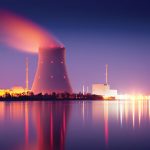 Nuclear power uses heat released from splitting atoms to convert water into steam that turns turbines. Nuclear power plants rely on uranium, a metal that is mined and specially processed. Fuel rods containing uranium are placed next to each other in a machine called a nuclear reactor. The reactor causes the uranium atoms to split, and in so doing, they release a tremendous amount of heat.
Nuclear power uses heat released from splitting atoms to convert water into steam that turns turbines. Nuclear power plants rely on uranium, a metal that is mined and specially processed. Fuel rods containing uranium are placed next to each other in a machine called a nuclear reactor. The reactor causes the uranium atoms to split, and in so doing, they release a tremendous amount of heat.
Renewable Resources
Renewable energy resources can be replenished in a short period of time, so they will never be all used up. Energy companies around the country are using renewable resources more and more to generate electricity.
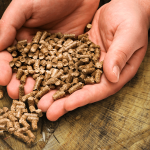 Biomass is organic matter, such as agricultural waste, wood chips, and bark left over when lumber is produced. Biomass can be burned in an incinerator to heat water to make steam, which turns a turbine to make electricity. It can also be converted into a liquid or gas, which can be burned to do the same thing.
Biomass is organic matter, such as agricultural waste, wood chips, and bark left over when lumber is produced. Biomass can be burned in an incinerator to heat water to make steam, which turns a turbine to make electricity. It can also be converted into a liquid or gas, which can be burned to do the same thing.
Biomass includes energy crops like wood, straw, and other crops grown primarily for use as a fuel. Energy crops are renewable, but some, like trees, take a long time to grow.
Farmers can grow trees on some of their land instead of wheat or other kinds of food. The wood is harvested regularly, cut into small chips and burned to provide heat or run small electric power plants.
Another type of energy that is produced from biomass is methane gas, a by-product of decay in landfills. As garbage rots in the ground, it gives off gases that can be collected and burned to produce heat or electricity.
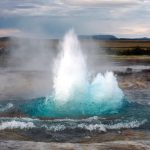 Geothermal energy is steam (or hot water that has been converted to steam) from deep inside the earth. Our planet’s interior is very hot—at its core, over 6,400 kilometers below the earth’s surface, temperatures may reach 5,000°C. This heat is continuously conducted from the earth’s core to the surrounding layer of rock, the mantle.
Geothermal energy is steam (or hot water that has been converted to steam) from deep inside the earth. Our planet’s interior is very hot—at its core, over 6,400 kilometers below the earth’s surface, temperatures may reach 5,000°C. This heat is continuously conducted from the earth’s core to the surrounding layer of rock, the mantle.
There are some places around the earth where magma (hot molten earth from the mantle) pushes up through cracks into the crust near the earth’s surface. Magma can heat nearby rock and water as hot as 370°C. Some of this hot water reaches the earth’s surface as hot springs or geysers, and some stays trapped deep underground in cracks and porous rocks. This hot water can be used directly or converted into steam to turn turbines that generate electricity. (The word “geothermal” comes from the Greek words geo, for earth, and therme, for heat. So geothermal means “earth heat.”)
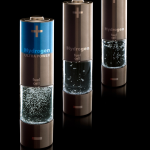 Hydrogen is a colorless, odorless gas. Hydrogen can be converted into electricity through a chemical reaction in a device called a fuel cell. Converting hydrogen into electricity produces no pollution—only water and heat.
Hydrogen is a colorless, odorless gas. Hydrogen can be converted into electricity through a chemical reaction in a device called a fuel cell. Converting hydrogen into electricity produces no pollution—only water and heat.
If the hydrogen comes from a renewable resource like landfill gas, it is considered renewable. However, if the hydrogen comes from a nonrenewable resource like fossil fuels, it is considered nonrenewable. Whether a fuel cell is using a renewable energy source depends on the source of the hydrogen fuel.
Today, NASA uses hydrogen fuel cells to convert hydrogen into electricity for astronauts. There are already some cars that run on hydrogen. In the future, hydrogen will be used to fuel vehicles and airplanes and to provide electricity to buildings.
 Hydropower uses the power of falling water to generate electricity. Water that is stored behind a dam is released and directed through tubes to flow against turbine blades and make them turn. Most hydropower facilities are found in hilly or mountainous areas. Canada is the top producer of hydroelectric power in North America, with its largest hydropower stations situated in British Columbia, Quebec, and Newfoundland and Labrador.
Hydropower uses the power of falling water to generate electricity. Water that is stored behind a dam is released and directed through tubes to flow against turbine blades and make them turn. Most hydropower facilities are found in hilly or mountainous areas. Canada is the top producer of hydroelectric power in North America, with its largest hydropower stations situated in British Columbia, Quebec, and Newfoundland and Labrador.
Ocean energy is a form of hydropower. Oceans cover more than 70% of the earth’s surface, making them the world’s largest solar collectors. The ocean stores thermal (heat) energy, which can be used to generate electricity using special turbine generators.

The energy of the ocean’s waves and tides can also be used to generate electricity with dams that force ocean water through turbines, or with buoys embedded with turbines that spin as they shift with the movement of waves. This is called tidal energy, or wave power. The world’s first wave power station was built on the Scottish island of Islay.
Other wave power stations are located in Mutriku Bay, Spain; Jaffa Port, Israel; and Kaneohe Bay near Oahu, Hawaii. Canada’s only tidal energy plant is located at Annapolis Royal, Nova Scotia. With the world’s highest tides occurring in the Bay of Fundy, there is additional opportunity for large-scale tidal energy projects in Canada. Scientists and engineers around the world are working on systems to harness the ocean’s energy on a large scale.
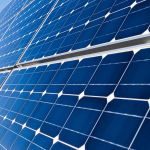 Solar Power is rapidly becoming a widely used form of energy in the United States. Every day, more solar energy falls to the earth than all the people on earth could use in 27 years! Special panels of solar cells, or modules, can capture sunlight and convert it directly into electricity. These panels are known as photovoltaic, or PV. (“Photo” is Greek for light, and “voltaic” pertains to electricity.) The electricity they produce can be used right away, fed into the power grid for others to use, or stored in a battery so it is also available on cloudy days.
Solar Power is rapidly becoming a widely used form of energy in the United States. Every day, more solar energy falls to the earth than all the people on earth could use in 27 years! Special panels of solar cells, or modules, can capture sunlight and convert it directly into electricity. These panels are known as photovoltaic, or PV. (“Photo” is Greek for light, and “voltaic” pertains to electricity.) The electricity they produce can be used right away, fed into the power grid for others to use, or stored in a battery so it is also available on cloudy days.
Another form of solar energy is used for solar hot water collectors, which allow water to be heated by the sun.
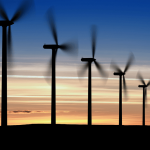 Wind power is renewable energy that uses the force of the wind to spin turbines. These spinning turbines generate electricity.
Wind power is renewable energy that uses the force of the wind to spin turbines. These spinning turbines generate electricity.
Most wind power is produced at wind farms, which are large groups of turbines in consistently windy locations. A very large wind farm can generate enough electricity for all the homes in a city of about one million people. Small wind turbines can be used for individual homes, businesses, and boats. They can be used to pump water, or the electricity can be stored in large batteries for use at another time.
Alternative Fuel Vehicles
Most cars, trucks, and buses on the road today are designed to operate using gasoline or diesel fuel. These are nonrenewable fossil fuels that won’t last forever. Finding alternatives helps to reduce harmful emissions and ensures we meet future transportation needs in a sustainable way.
Alternative fuel vehicles are designed to run on fuels other than gasoline or diesel fuel. Some of these vehicles are already on the road. Others are still in the research and development stage. As increasing numbers of vehicle companies are making alternative fuel vehicles, and research and development into them continues, fuel efficiency, driving range, and speed capacities are likely to improve.
Electric Vehicles
Since 1999, when hybrid electric vehicles (EVs) first appeared on the market, automakers have been busy designing and building new models, and there are now several types of EVs on the roads:
- Battery Electric Vehicles (BEVs) are powered only by electricity from an on-board battery, charged by plugging into the grid.
- Hybrid Electric Vehicles (HEVs) use both a gasoline engine and an electric motor to propel the vehicle.
- Plug-in Hybrid Electric Vehicles (PHEVs) use both a gasoline engine and electricity obtained by plugging into the electrical grid.
Many EVs are being designed for urban driving because they work well for short distances, lower speeds, and stop-and-go driving. These EVs are smaller than standard passenger vehicles, making them easier to park. They are also more efficient than cars with gasoline engines, and require less maintenance.
Battery Electric Vehicles
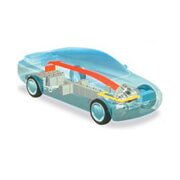 Battery EVs run entirely on electrical energy. Instead of a fuel tank, batteries store the electricity that is used to operate the vehicle. These batteries can be recharged by plugging the vehicle into a special high-voltage charging station or standard 120-volt or 240-volt household outlets. It takes anywhere from 2 to about 20 hours to recharge the battery, depending on the vehicle’s charger and the voltage used. The batteries store the electricity until the vehicle is driven.
Battery EVs run entirely on electrical energy. Instead of a fuel tank, batteries store the electricity that is used to operate the vehicle. These batteries can be recharged by plugging the vehicle into a special high-voltage charging station or standard 120-volt or 240-volt household outlets. It takes anywhere from 2 to about 20 hours to recharge the battery, depending on the vehicle’s charger and the voltage used. The batteries store the electricity until the vehicle is driven.
Early types of battery EVs included golf carts, scooters, and other vehicles used for short trips at low speeds. With rapid industry growth this decade, battery EVs can accommodate both city and highway driving needs. The high-end Tesla can reach speeds of 200 mph and travel almost 400 miles on a single charge. Lower cost models can reach up to 90 mph and travel 170-259 miles on a charge.
Under the hood, a battery EV consists of an electric motor, one or more controllers, and batteries. The controller governs the amount of electricity that flows from the batteries to the motor when the driver steps on the accelerator. The motor changes electrical energy from the batteries to mechanical energy, which makes the vehicle move.
Driving a battery EV down the road produces no pollution at all. Even when pollution related to power plant electricity production is factored in, these EVs produce less pollution than gasoline- or diesel-powered vehicles. Battery EVs are also more efficient than gasoline or diesel vehicles, if you compare the energy used in creating gasoline at a refinery to producing electricity in a power plant.
When a battery EV is stopped in traffic, it doesn’t have to use fuel to keep the motor running like a gasoline engine does. Added efficiency is created by something called “regenerative braking.” When the vehicle slows down, the motor continues to turn, but the power no longer flows to the wheels. Instead, the power is fed back to the batteries, giving them a small charge every time the driver stops or goes downhill.
Hybrid Electric Vehicles

A hybrid vehicle is any vehicle that uses two or more power sources. The most common hybrids on the road today are gasoline-electric hybrids, also called hybrid EVs. A gasoline engine and an electric motor power these vehicles.
Since 1999, when hybrid electric vehicles first appeared on the market, automakers have been busy designing and building new models. There are now over 60 models of HEVs on the market, with the Toyota Prius remaining the top-selling HEV since its introduction in 2000.
The major components of an HEV include a gasoline engine, an electric motor, a transmission, and, in some models, a generator. A fuel tank stores gasoline for the engine, and a battery pack stores electricity for the motor. The battery is charged by the gasoline engine and by the electric motor or generator during normal operation. Regenerative braking charges the batteries slightly when the car slows down, recovering some of the energy.
Plug-in Hybrid Electric Vehicles
Another type of hybrid electric vehicle is the plug-in hybrid, or PHEV, which uses both gasoline and electricity. These vehicles have two power systems, an internal combustion engine and a battery. Unlike the regular hybrids such as the Toyota Prius, the PHEV’s battery can be recharged either by the gas engine or by plugging the vehicle into an external source of electricity. Some PHEVs are known as extended-range electric vehicles, or EREVs, because their secondary power source provides enough fuel to allow the vehicle to drive hundreds of miles when the batteries become low.
All types of hybrid EVs use smaller, more efficient gasoline engines than conventional gasoline or diesel vehicles. They also burn less fuel than conventional vehicles, thus producing fewer pollutants and releasing less carbon dioxide into the air.
Natural Gas Vehicles
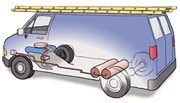 Vehicles that run on natural gas instead of gasoline are called natural gas vehicles (NGVs). Natural gas that has been compressed into special high-pressure cylinders to get more volume into a smaller amount of space is called compressed natural gas, or CNG. Some NGVs run on CNG only, and others can run on either CNG or gasoline. Some long-haul trucks and transit buses run on liquefied natural gas, or LNG, which is made by cooling natural gas to condense it into a liquid.
Vehicles that run on natural gas instead of gasoline are called natural gas vehicles (NGVs). Natural gas that has been compressed into special high-pressure cylinders to get more volume into a smaller amount of space is called compressed natural gas, or CNG. Some NGVs run on CNG only, and others can run on either CNG or gasoline. Some long-haul trucks and transit buses run on liquefied natural gas, or LNG, which is made by cooling natural gas to condense it into a liquid.
When the engine of an NGV is started, natural gas flows into a fuel line, and then enters a regulator where the gas pressure is reduced. A fuel injection system mixes the gas with air and feeds the mixture into the engine. The fuel-air mixture is adjusted to burn efficiently and with the least possible emissions. Natural gas burns in the engine just like gasoline.
NGVs produce fewer pollutants than gasoline or diesel vehicles and cost less to maintain. The tanks used to store natural gas can withstand crashes and heat far better than most gasoline tanks can. In the event of a crash, natural gas disperses into the air, unlike gasoline, which pools on the ground and creates a fire hazard.
Fuel-Cell Vehicles
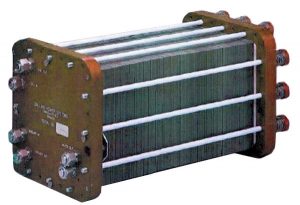 Fuel-cell vehicles (FCVs), currently in development, are powered by hydrogen fuel cells. Fuel cells produce electricity by combining oxygen with hydrogen. A fuel-cell car would operate much like an EV, except that it would depend on a supply of hydrogen, rather than a battery pack, for power.
Fuel-cell vehicles (FCVs), currently in development, are powered by hydrogen fuel cells. Fuel cells produce electricity by combining oxygen with hydrogen. A fuel-cell car would operate much like an EV, except that it would depend on a supply of hydrogen, rather than a battery pack, for power.
The components of one prototype FCV include three stacks of fuel cells, a tank of hydrogen, an electric motor, and an inverter. The fuel cells operate something like batteries in reverse. Inside each fuel cell, hydrogen and oxygen from the air are combined in a reaction that splits the molecules into protons and electrons and produces electric current. The inverter changes the direct current produced by the fuel cell into alternating current that powers the electric motor, which turns the vehicle’s wheels. The electric current also charges a conventional car battery that powers the car’s lights, radio, air conditioning, and so on.
FCVs are twice as efficient as gasoline or diesel engines, and they produce no pollutants or carbon dioxide. The only tailpipe emission is water vapor. The biggest challenge now facing the developers of FCVs is where to get the hydrogen.
Hydrogen can be produced from a variety of resources, including fossil fuels, nuclear energy, biomass, and other renewable energy technologies. The environmental impact and energy efficiency of hydrogen depends greatly on how it is produced. At the present time, fossil fuels are the most convenient source of hydrogen. But using fossil fuels to produce hydrogen creates pollution and adds to the consumption of nonrenewable resources.
Alternative sources of hydrogen include plant crops, agricultural waste, and wastewater from food processing plants. But, at least so far, so much energy is required to extract hydrogen from these sources that it becomes too expensive to use as a vehicle fuel. FCVs that arrive on the market in the next few years probably will use hydrogen-rich fuels such as methanol, natural gas, or even gasoline, but these fuels must first be converted into pure hydrogen gas by an onboard device called a reformer. The long-term goal is to find more effective and efficient ways to produce and store hydrogen.
Biodiesel Vehicles
 Biodiesel is a fuel that can be made from vegetable oils, recycled cooking oils from fast food restaurants, and certain animal fats, such as fish oil or beef tallow. Biodiesel can be used in any diesel engine in place of diesel fuel. No engine modification is necessary, because diesel engines were originally designed to run on a variety of fuels, including vegetable oils.
Biodiesel is a fuel that can be made from vegetable oils, recycled cooking oils from fast food restaurants, and certain animal fats, such as fish oil or beef tallow. Biodiesel can be used in any diesel engine in place of diesel fuel. No engine modification is necessary, because diesel engines were originally designed to run on a variety of fuels, including vegetable oils.
Biodiesel is easy to make and store, and is safer to transport than diesel fuel. It helps increase engine life. Using it reduces the consumption of fossil fuels. Compared to diesel fuel, biodiesel produces almost no pollutants and significantly reduces carbon dioxide emissions. It’s also more pleasant to use—the exhaust from a biodiesel vehicle often smells like popcorn or French fries! In some regions of the United States, biodiesel is becoming popular as a fuel for agricultural equipment, such as tractors and trucks, as well as for passenger vehicles.
People-Powered Vehicles
In many parts of the world, especially in places where vehicles and fuel are expensive and difficult to obtain, people depend on their own two feet for transportation. Wheelbarrows, rickshaws, and bicycles are just a few examples of transportation devices that run solely on people power.

Using people power whenever possible makes a lot of sense. Walking and bicycling produce no pollutants and help keep the environment healthy. They also contribute to personal health—getting plenty of exercise can lengthen a person’s life span and help avoid health problems like obesity and heart disease. And people are easy to fuel—all it takes is food!


